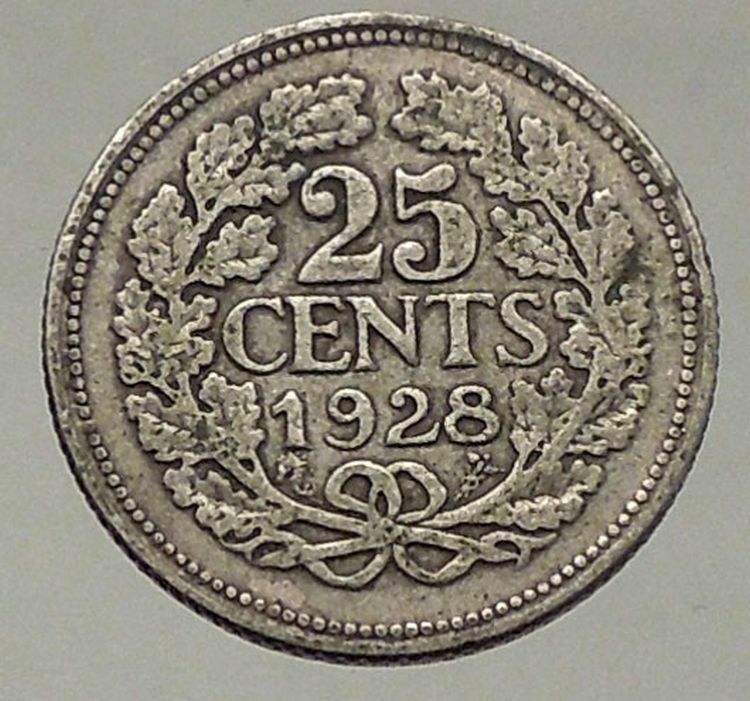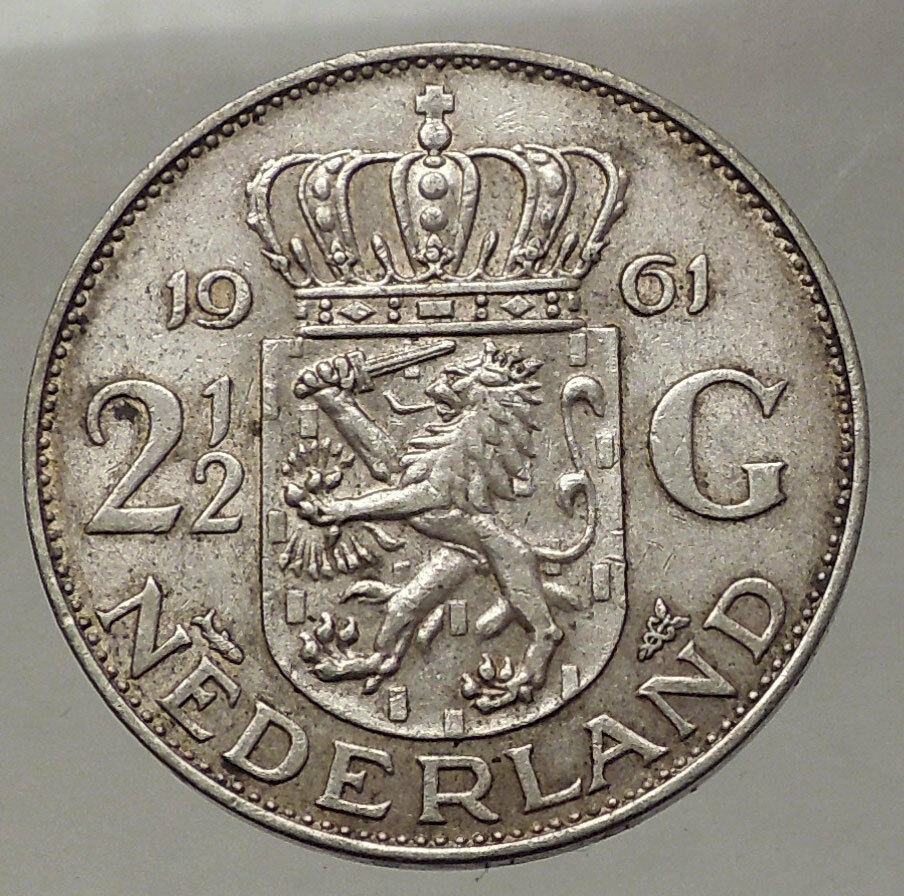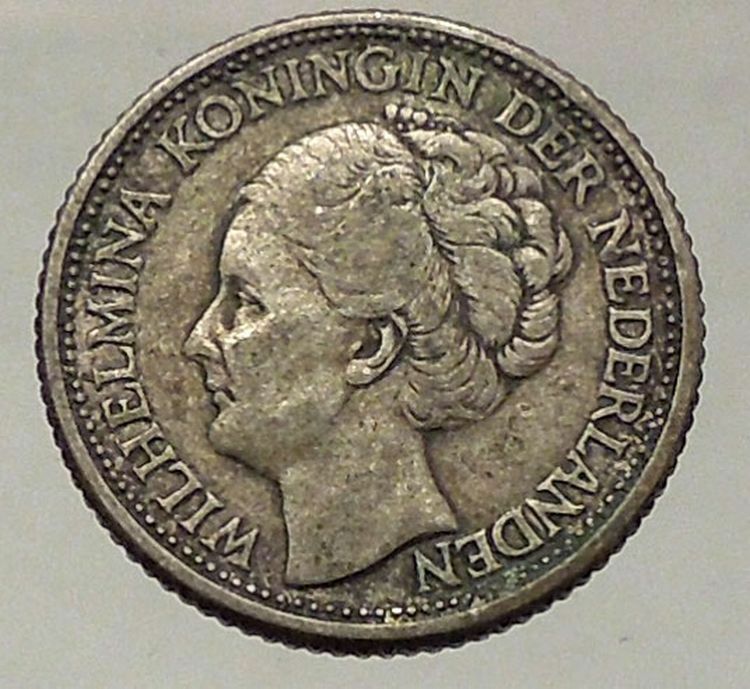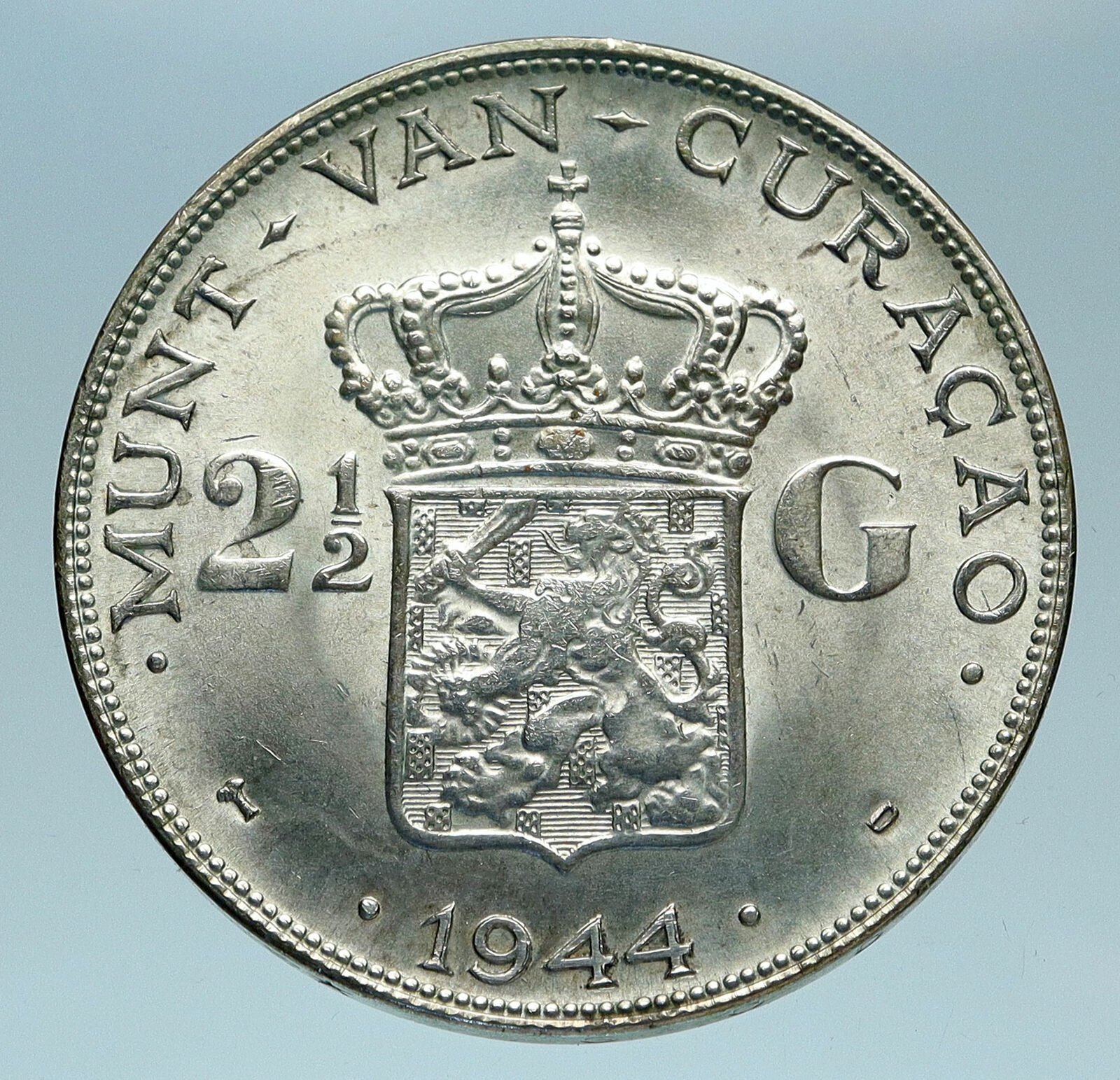|
Netherlands Antilles
Juliana – Queen: 6 September 1948 – 30 April 1980
U.S. Bicentennial – Andrew Doria Brig
1976 Proof Silver 25 Gulden 45.5mm (41.82 grams) 0.925 Silver (1.2526 oz. ASW)
Reference: KM# 15.2
JULIANA REGINA-NEDERLANDSE ANTILLEN · 1976 ·, Queen Juliana facing right.
1776·1976 ANDREW DORIA 25G FM, The brig ship “Andrew Doria” centered.
You are bidding on the exact item pictured, provided with a Certificate of Authenticity and Lifetime Guarantee of Authenticity.
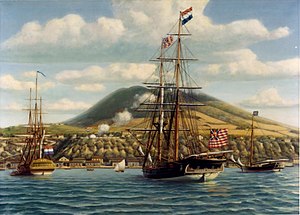 Andrew Doria was a brig purchased by the Continental Congress in November 1775. She is most famous for her participation in the Battle of Nassau—the first amphibious engagement by the Continental Navy and the Continental Marines—and for being the first United States vessel to receive a salute from a foreign power. Andrew Doria was a brig purchased by the Continental Congress in November 1775. She is most famous for her participation in the Battle of Nassau—the first amphibious engagement by the Continental Navy and the Continental Marines—and for being the first United States vessel to receive a salute from a foreign power.
On 13 October 1775, the Continental Congress authorized the purchase of the merchant brig Defiance. The ship was acquired in mid-November and moored in Wharton and Humphreys shipyard in Philadelphia where she was converted into a warship by Joshua Humphreys (hull strengthening), John Barry (re-rigging), and John Falconer (ordnance and provisioning) at a cost of £296.4s.6d. She was named Andrew Doria after the 16th-century Genoese admiral Andrea Doria. Under the command of Captain Nicholas Biddle, Andrew Doria departed Philadelphia on 4 January 1776, as a warship in Esek Hopkins’ small fleet of five newly fitted warships (Alfred, Andrew Doria, Cabot, Columbus, and Providence), bound for the Chesapeake Bay. Between 11 and 17 February, the fleet was joined by the small sloop Fly, the sloop Hornet, and the schooner Wasp.
On 17 February 1776, Hopkins decided to take advantage of the discretion offered him and skip his missions in the Chesapeake Bay and along the coasts of the Carolinas. Instead, he took the fleet to the Bahamas for a raid on the island of New Providence to seize a large supply of gunpowder reportedly stored in the two forts that protected Nassau. On 1 March, the fleet reached the coast of Abaco Island where the ship Alfred captured two small sloops and Hopkins obtained intelligence from the prisoners that New Providence lay undefended. Hopkins planned to take Nassau by frontal assault, slipping his landing party of 270 sailors and marines into the harbor hidden on board the captured sloops. It was hoped that the American troops would not be detected until the landing and assault on Fort Nassau began. Success in this endeavor would enable the fleet to enter the harbor while the fort’s guns, then in American hands, held the town at bay.
The marines and sailors embarked on the two captured sloops on the evening of 2 March and headed for New Providence, hoping to arrive at daybreak. While following the sloops, the fleet attempted to remain out of sight until the landing party had secured the fort. Andrew Doria—popularly referred to as the “Black Brig”—outdistanced her consorts and found it necessary to lay-to until the other American warships caught up. As the troop-carrying sloops headed into the harbor, Fort Nassau’s guns opened fire. The shot fell short but demonstrated that the American fleet had been detected and that its intentions had been surmised. Hopkins recalled his ships.
After conferring with his officers, Hopkins decided to land his troops two miles (3 km) down the coast from Fort Montagu, which protected the eastern approaches to Nassau. The marines and sailors went ashore on 3 March and marched to Fort Montagu whose garrison surrendered without offering any real resistance. On 4 March, the Americans took Fort Nassau and town of Nassau. The fleet remained for almost two weeks, dismantling the guns of the forts and loading the captured materiel. During this stay, large numbers of the crew of each ship were stricken by a virulent fever. This complicated an already serious health problem caused by an outbreak of smallpox on all of the ships except for Andrew Doria whose crew had been protected by inoculation due to the far-sighted insistence of Nicholas Biddle. As a result of the crew’s immunization, Andrew Doria was selected to serve as a hospital ship for the fleet and continued in this role for the remainder of the expedition. On 16 March, Hopkin’s fleet departed Nassau and headed north.
Shortly after midnight on 6 April 1776, a lookout on Andrew Doria sighted two vessels to the southeast. Biddle passed word of the discovery to Hopkins who ordered the fleet to head for the strangers. The larger of the unidentified ships headed toward the Americans and before long she was within hailing distance and identified herself as “… his majesty’s ship of war Glasgow….” A broadside from Cabot into the British frigate opened a fierce fight in which the American ships were unable to fight as a squadron. In attempting to avoid a salvo from Glasgow, Cabot crossed Andrew Doria’s bow, forcing Biddle’s brig onto a port tack which avoided collision but took her away from the action. Meanwhile, Alfred and Columbus, Hopkins’ largest warships, took on Glasgow but received worse punishment than they inflicted.
As the crew of Andrew Doria worked the ship into position to reenter the engagement and opened fire, Glasgow’s captain realized he was overmatched and decided to stand off to the northward. Andrew Doria, followed at a distance by her consorts, gave chase and kept up a running fight with her bow chasers until recalled by Hopkins, lest Glasgow lead his fleet to a Royal Navy squadron then operating in Rhode Island waters. When the American fleet had reformed, it retired to New London, Connecticut, where it arrived on the morning of 8 April.
From 9 April to 17 September 1776, Andrew Doria patrolled the Atlantic coast from Connecticut to Bermuda, capturing a number of British and Loyalist ships. Capt. Biddle anchored his brig at Chester, Pennsylvania, on the evening of 17 September, ending his last cruise on the warship, as he had been selected to command Randolph, one of the four new frigates being built at Philadelphia for the Continental Navy. Capt. Isaiah Robinson took command of Andrew Doria.
Robinson sailed Andrew Doria down the Delaware River on 17 October 1776, for a voyage to the West Indies to obtain a cargo of munitions and military supplies at the Dutch island of Sint Eustatius. When the brig reached the island on 16 November, she fired a 13-gun salute and received a reply from Fort Oranje—the first salute to an American flag on board an American warship in a foreign port. Andrew Doria also carried a copy of the Declaration of Independence to the island. The so-called “first salute” was widely reported in the United States at the time, and later provided the title for Barbara Tuchman’s 1988 book, The First Salute: A View of the American Revolution.
On her way back to the Delaware River, Andrew Doria encountered the sloop HMS Racehorse, of 10 guns, and under the command of Commander James Jones. A two-hour single-ship action ensued before Racehorse struck. Andrew Doria had lost four men killed and eight wounded; casualties on Racehorse apparently were higher. Andrew Doria encountered a British snow and assigned Joshua Barney to return the ship to Philadelphia, but was captured with a fouled rudder off Chincoteage by HMS Perseus. The captain released Barney on pardon in Charleston to return to Philadelphia on foot over 19 days. Andrew Doria returned to Philadelphia where the Continental Navy acquired Racehorse, which it renamed Surprise.
Andrew Doria was stationed in the Delaware River through the spring and summer of 1777. After Vice Admiral Lord Howe brought his British fleet into the river in September 1777, Andrew Doria was part of the forces charged with defending Philadelphia. Following the British occupation of Fort Mifflin on 16 November, Andrew Doria, with the remaining ships of the Continental Navy, sought shelter under the guns of Fort Mercer, at Red Bank, New Jersey. With the evacuation of Fort Mercer on 20 November, Robinson gave orders the next day for the ships to be burned to prevent capture. This was done shortly thereafter.
 Julianana (Juliana Louise Emma Marie Wilhelmina; 30 April 1909 – 20 March 2004) was Queen of the Netherlands from 1948 until 1980. She reigned for nearly 32 years. Her reign saw the decolonization of both Indonesia (Dutch East Indies) and Suriname from the Kingdom of the Netherlands. Julianana (Juliana Louise Emma Marie Wilhelmina; 30 April 1909 – 20 March 2004) was Queen of the Netherlands from 1948 until 1980. She reigned for nearly 32 years. Her reign saw the decolonization of both Indonesia (Dutch East Indies) and Suriname from the Kingdom of the Netherlands.
Upon her death at the age of 94, she was the longest-lived former reigning monarch in the world.
The Antilles are an archipelago bordered by the Caribbean Sea to the south and west, the Gulf of Mexico to the northwest, and the Atlantic Ocean to the north and east.
<the antillean="" islands="" are="" divided="" into="" two="" smaller="" groupings:="" the="" greater="" antilles,="" which="" includes="" larger="" of="" cuba,="" jamaica,="" puerto="" rico,="" hispaniola="" (subdivided="" haiti="" and="" dominican="" republic)="" cayman="" islands;="" lesser="" contains="" northerly="" leeward="" islands,="" southeasterly="" windward="" antilles="" just="" north="" venezuela.="" lucayan="" archipelago="" (consisting="" bahamas="" turks="" caicos="" islands),="" though="" part="" west="" indies,="" generally="" not="" included="" among="" islands.
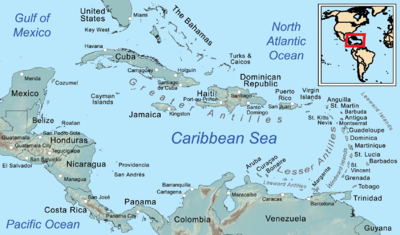 Geographically, the Antillean islands are generally considered a subregion of North America. Culturally speaking, Cuba, the Dominican Republic, and Puerto Rico – and sometimes the whole of the Antilles – are included in Latin America, although some sources avoid this socio-economic oversimplification by using the phrase “Latin America and the Caribbean” instead (see Latin America, “In Contemporary Usage”). In terms of geology, the Greater Antilles are made up of continental rock, as distinct from the Lesser Antilles, which are mostly young volcanic or coral islands. Geographically, the Antillean islands are generally considered a subregion of North America. Culturally speaking, Cuba, the Dominican Republic, and Puerto Rico – and sometimes the whole of the Antilles – are included in Latin America, although some sources avoid this socio-economic oversimplification by using the phrase “Latin America and the Caribbean” instead (see Latin America, “In Contemporary Usage”). In terms of geology, the Greater Antilles are made up of continental rock, as distinct from the Lesser Antilles, which are mostly young volcanic or coral islands.
.svg/220px-Kingdom_of_the_Netherlands_(orthographic_projection).svg.png)
The Kingdom of the Netherlands, commonly known as the Netherlands, is a sovereign state and constitutional monarchy with territory in western Europe and in the Caribbean.
  The four parts of the Kingdom – Aruba, Curaçao, Sint Maarten and the Netherlands – are constituent countries (landen in Dutch) and participate on a basis of equality as partners in the Kingdom. In practice, however, most of the Kingdom affairs are administered by the Netherlands – which comprises roughly 98% of the Kingdom’s land area and population – on behalf of the entire Kingdom. Consequently, the countries of Aruba, Curaçao, and Sint Maarten are dependent on the Netherlands for matters like foreign policy and defence, although they are autonomous to a certain degree with their own parliaments. The four parts of the Kingdom – Aruba, Curaçao, Sint Maarten and the Netherlands – are constituent countries (landen in Dutch) and participate on a basis of equality as partners in the Kingdom. In practice, however, most of the Kingdom affairs are administered by the Netherlands – which comprises roughly 98% of the Kingdom’s land area and population – on behalf of the entire Kingdom. Consequently, the countries of Aruba, Curaçao, and Sint Maarten are dependent on the Netherlands for matters like foreign policy and defence, although they are autonomous to a certain degree with their own parliaments.
The vast majority in land area of the constituent country of the Netherlands (as well as the Kingdom) is located in Europe, with the exception of the Caribbean Netherlands: its three special municipalities (Bonaire, Saba, and Sint Eustatius) that are located in the Caribbean. The constituent countries of Aruba, Curaçao, and Sint Maarten are located in the Caribbean as well.l.
|





 Andrew Doria was a brig purchased by the Continental Congress in November 1775. She is most famous for her participation in the Battle of Nassau—the first amphibious engagement by the Continental Navy and the Continental Marines—and for being the first United States vessel to receive a salute from a foreign power.
Andrew Doria was a brig purchased by the Continental Congress in November 1775. She is most famous for her participation in the Battle of Nassau—the first amphibious engagement by the Continental Navy and the Continental Marines—and for being the first United States vessel to receive a salute from a foreign power. Julianana (Juliana Louise Emma Marie Wilhelmina; 30 April 1909 – 20 March 2004) was Queen of the Netherlands from 1948 until 1980. She reigned for nearly 32 years. Her reign saw the decolonization of both Indonesia (Dutch East Indies) and Suriname from the Kingdom of the Netherlands.
Julianana (Juliana Louise Emma Marie Wilhelmina; 30 April 1909 – 20 March 2004) was Queen of the Netherlands from 1948 until 1980. She reigned for nearly 32 years. Her reign saw the decolonization of both Indonesia (Dutch East Indies) and Suriname from the Kingdom of the Netherlands. Geographically, the Antillean islands are generally considered a subregion of North America. Culturally speaking, Cuba, the Dominican Republic, and Puerto Rico – and sometimes the whole of the Antilles – are included in Latin America, although some sources avoid this socio-economic oversimplification by using the phrase “Latin America and the Caribbean” instead (see Latin America, “In Contemporary Usage”). In terms of geology, the Greater Antilles are made up of continental rock, as distinct from the Lesser Antilles, which are mostly young volcanic or coral islands.
Geographically, the Antillean islands are generally considered a subregion of North America. Culturally speaking, Cuba, the Dominican Republic, and Puerto Rico – and sometimes the whole of the Antilles – are included in Latin America, although some sources avoid this socio-economic oversimplification by using the phrase “Latin America and the Caribbean” instead (see Latin America, “In Contemporary Usage”). In terms of geology, the Greater Antilles are made up of continental rock, as distinct from the Lesser Antilles, which are mostly young volcanic or coral islands..svg/220px-Kingdom_of_the_Netherlands_(orthographic_projection).svg.png)

 The four parts of the Kingdom – Aruba, Curaçao, Sint Maarten and the Netherlands – are constituent countries (landen in Dutch) and participate on a basis of equality as partners in the Kingdom. In practice, however, most of the Kingdom affairs are administered by the Netherlands – which comprises roughly 98% of the Kingdom’s land area and population – on behalf of the entire Kingdom. Consequently, the countries of Aruba, Curaçao, and Sint Maarten are dependent on the Netherlands for matters like foreign policy and defence, although they are autonomous to a certain degree with their own parliaments.
The four parts of the Kingdom – Aruba, Curaçao, Sint Maarten and the Netherlands – are constituent countries (landen in Dutch) and participate on a basis of equality as partners in the Kingdom. In practice, however, most of the Kingdom affairs are administered by the Netherlands – which comprises roughly 98% of the Kingdom’s land area and population – on behalf of the entire Kingdom. Consequently, the countries of Aruba, Curaçao, and Sint Maarten are dependent on the Netherlands for matters like foreign policy and defence, although they are autonomous to a certain degree with their own parliaments.

